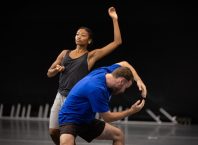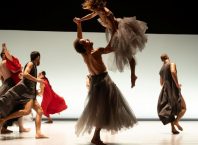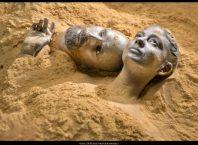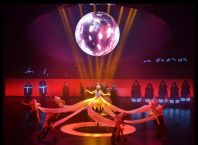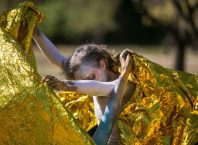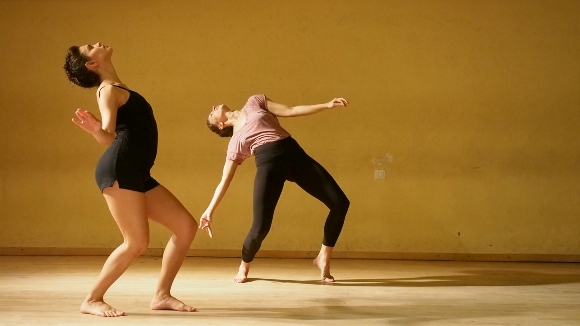
Dance is an ephemeral art, a constant disappearing act. These days, many choreographers document their work on video, both in rehearsal and performance. This ensures that a certain record remains of the choreography, a vital tool in any revival of a work, yet there will always be an essential distance and difference between any film version and live performance. In a sense, a dance lives in its performance. When a dance is not performed, even if there exists a visual record of the choreography, it becomes an item in an archive, and certainly far less likely to live in the collective consciousness.
In Israel, dance has always been a vital element of the contemporary culture, from folk dance celebrations of holidays, to the development of modern concert dance and contemporary dance. As in so many other fields, the history of dance has amassed a great deal of material in a relatively short period of time. How then to take dance out of the library and let the work of innovative and distinctive choreographers continue to live and inspire in the present?
Following Footprints is a project of Mifal Hapais dedicated to reviving the work of leading choreographers in Israeli history, through their interpretation by contemporary choreographers. In other words: the works are studied and re-interpreted through the eyes of choreographers working today in the Israeli dance scene, creating a dialogue between then and now. Three choreographers were chosen to participate in this project: Barak Marshall, Ronen Itzhaki and Noa Shadur. Each chose a dance piece from a list of significant works, and received a substantial grant to research and develop this new work.
Noa Shadur elected to work on Suite: Theme and Variations, created by Noa Eshkol in 1966. The premiere of the new dance, Entropy, will take place tonight, February 1, 2015, at the Tel Aviv Museum.
Noa Eshkol, co-creator with Prof. Abraham Wachman of the Eshkol-Wachman Movement Notation, is a fascinating figure in the history of dance. The movement notation system is not only a way of documenting and transmitting information about movement, but a way of thinking about movement that can open new directions of understanding and experiencing movement and the body. Eshkol’s dances and teachings are kept alive by dancers, who worked with her for many years, the most veteran are Racheli Nul-Kahana and Ruti Sela. I had the opportunity to see their work when the Noa Eshkol Chamber Dance Group was hosted by the Batsheva Dance Company. Her work was the subject of two exhibitions that took place in 2012: Sharon Lockheart/Noa Eshkol, curated by Talia Amar, at the Israel Museum, Jerusalem, and an exhibition at the Center for Contemporary Art (CCA) in Tel Aviv, curated by Sergio Edelsztein, that included open classes, open rehearsals of the Noa Eshkol Chamber Dance Group, lectures, and film screenings.
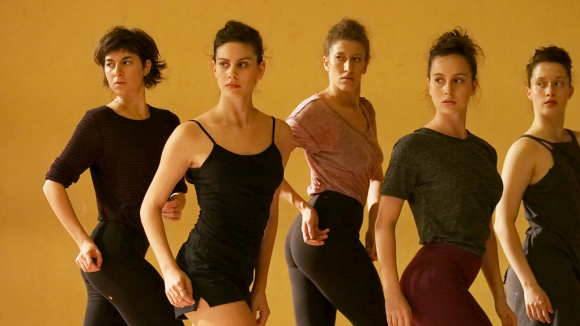
Noa Eshkol makes an interesting choice for Shadur. Aside from their shared, and very apt, first name (Noa comes from the verb ‘to move’ in Hebrew), the two choreographers are very different from one another, yet not entirely so. Shadur’s work often explores harsh and difficult themes, yet it is profoundly aesthetic. Her movement language reflects a deep involvement and research, resulting in a physical expression of the concept that feels very natural and intuitive. One of her more recent works, We Do Not Torture People, was awarded First Prize in the No Ballet Choreography Competition, Ludwigshafen, Germany in 2013. In Shifters, her most recent work, she reveals an ability to generate powerful impact with the simplest of means. In this duet between two male dancers performed on an empty stage, the forces between the two, the nuance and power of the movement language is mesmerizing. An earlier work, Calypso, is utterly different in its very lovely and edgy social commentary, quoting and referencing iconic images and movement languages of the feminine, bathing beauty, Indian goddess, punk princess and a pantheon of others take the stage, as performed by five female dancers.
Eshkol, on the other hand, focused on the investigation of movement, an exploration of the body in all its configurations, alone or in different groupings. Her work was not intended to be emotional or thematic, yet for myself as an observer, it attains a strong aesthetic impact. From my slender acquaintance with Eshkol’s work and a more substantial knowledge of Shadur, I feel that the two share a precision that is the result of deep investigation of moment, although the origin and motivation of the research is very different.
Entropy by Noa Shadur, based on Noa Eshkol’s Suite, is sold out for tonight, but there will be additional performances on February 7th at 17:00 and 20:00; and February 18th at 18:00 and 21:00. Performances will take place at the Tel Aviv Museum. For tickets, call: 03-6077020.

